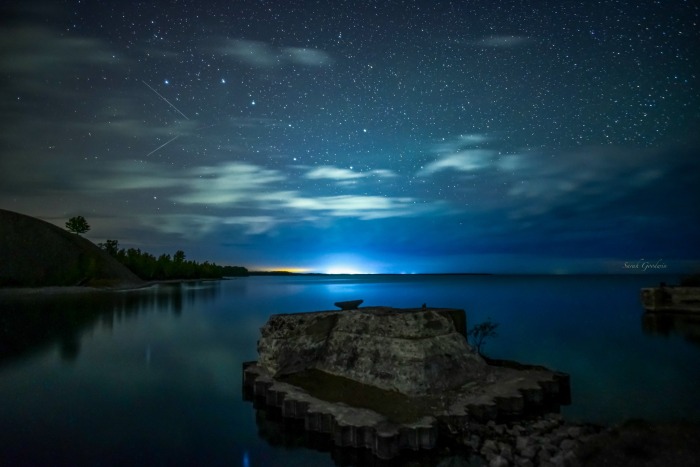Comet P12 Pons-Brooks Visits Eagle Harbor by Shelby Diamondstar Photography
Let’s head WAY north for another exciting celestial phenomenon, Comet P12 Pons-Brooks aka the Devil’s Comet. Space.com explains that the comet is named after French astronomer Jean-Louis Pons (1761-1831) who went on to become the greatest visual comet discoverer of all time:
In today’s world, comets are routinely found when they are far out in space, beyond the ability of being picked up by human eyes, but are caught using robotic cameras attached to large telescopes either here on Earth or from satellites out in space.
In contrast, Pons made most of his discoveries using telescopes and lenses of his own design; his “Grand Chercheur” (“Great Seeker”) was an instrument with a large aperture and short focal length, similar to telescopes that our modern-day amateurs would refer to as a “comet seeker.” Pons is noted today for visually discovering 37 comets (still a record) from 1801 to 1827.
…On Sept. 2, 1883, British-born American comet observer William R. Brooks (1844-1921) accidently found it. Like Pons, Brooks was a prolific discoverer of comets. In fact, his total of 27 visual discoveries is second only to Pons. Not until the first orbital calculations of Brooks’ discovery was made, was it realized that this comet and the comet found by Pons of 1812 were one of the same. So, this comet now bears the surnames of both observers.
With an orbital period of roughly 71 years, comet Pons-Brooks is considered to be a “Halley-type” comet, that is, a comet with an orbital period between 20 and 200 years, often appearing only once or twice within one’s lifetime. Other comets with a similar orbital period include 13P/Olbers, 23P/Brosen-Metcalf and the most famous of all, 1P/Halley. Because it was the twelfth comet to have a definitive orbital period calculated, it is cataloged today as 12P/Pons-Brooks.
You can look for the comet just after sunset, but you will probably need binoculars given the afterglow of the sunset.
MaryBeth took this way up on the Keweenaw Peninsula at Eagle Harbor Lighthouse. Click the photo above to share a comment with her on Facebook and for sure view & purchase her work at shelbydiamondstar.com!
PS: In my best Arnold voice, “I’ll be back” (because she has an amazeballs photo for us!)
Share Michigan in Pictures:











